What is Farmer’s Cheese? The Creamy Companion to Your Crusty Breads

Today, we delve into the realm of dairy and discover a hidden gem – Farmer’s Cheese. This mild, creamy delight is more than just a topping for your crusty bread; it’s a testament to the simplicity and ingenuity of traditional food preparation.
But what exactly is Farmer’s Cheese?
Join us as we unravel the story behind this versatile cheese, its humble origins, and how it has found a place in kitchens around the world. Whether you’re a cheese connoisseur or a curious foodie, this journey into the creamy world of Farmer’s Cheese is sure to tantalize your taste buds.
Quick Facts About Farmer’s Cheese
| Quick Facts | Description |
|---|---|
| Origin | Eastern Europe |
| Type of Milk | Traditionally made from cow’s milk, but can also be made from goat or sheep’s milk |
| Texture | Soft, moist, and crumbly |
| Flavor | Mild, slightly tangy, and creamy |
| Color | White |
| Fat Content | Varies based on the type of milk used; typically lower in fat compared to hard cheeses |
| Uses | Used in a variety of dishes including salads, desserts, pastries, and spreads. Can be eaten fresh or used in cooking |
| Nutritional Value | High in protein, calcium, and vitamin B12. Also contains probiotics beneficial for digestive health |
| Shelf Life | Short, usually about 1-2 weeks when refrigerated |
| Popular Varieties | Quark, Cottage cheese, Ricotta |
| Making Process | Made by adding an acid (like lemon juice or vinegar) to milk to separate the curds from the whey. The curds are then drained and pressed into shape |
What is Farmer’s Cheese?
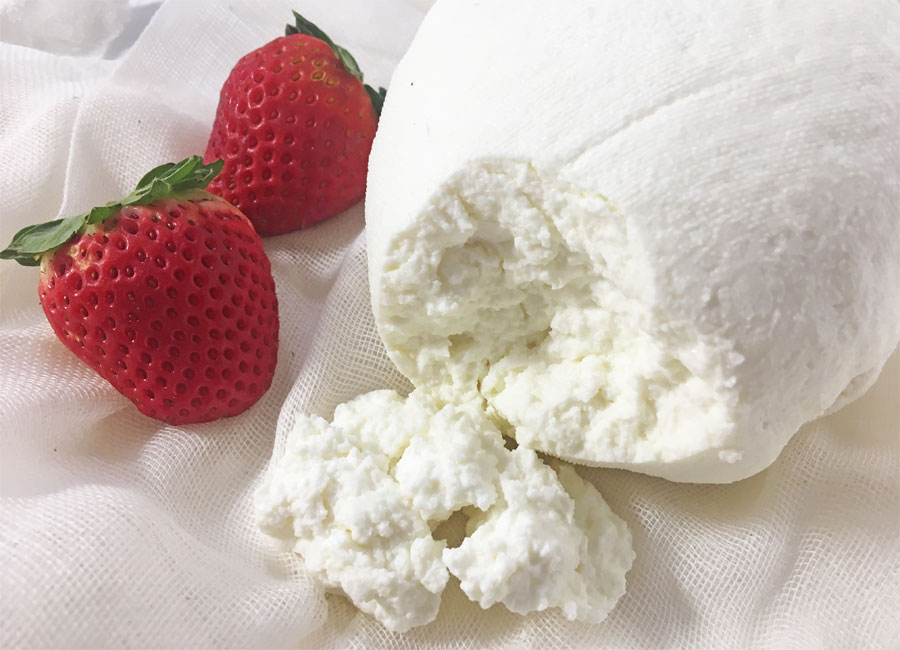
Farmer’s Cheese, a timeless staple in many kitchens around the world, holds a unique charm that sets it apart from other types of cheese. Originating from Eastern Europe, this delightful dairy product has subsequently found its way into various cuisines owing to its versatility and intriguing flavor profile.
Unlike most cheeses that are aged to develop their flavors, Farmer’s Cheese is fresh and ready to be consumed soon after it’s made. Traditionally crafted from cow’s milk, it can also be made using goat or sheep’s milk, lending a delicate variety to its taste. It boasts a soft, moist, and crumbly texture, making it easy to incorporate into a plethora of dishes.
The flavor of Farmer’s Cheese is mild yet slightly tangy and creamy, offering a refreshing contrast to its counterparts. Its white color adds a simple, rustic appeal to any dish it graces. While its fat content varies based on the type of milk used, it’s typically lower in fat compared to hard cheeses, making it a healthier choice for cheese lovers.
Farmer’s Cheese shines in its versatility. It can be savored in salads, desserts, pastries, and spreads, as well as enjoyed fresh on its own. Nutritionally, it’s a powerhouse of protein, calcium, and vitamin B12, and also contains probiotics beneficial for digestive health.
Despite its short shelf life, usually about 1-2 weeks when refrigerated, Farmer’s Cheese has remained a beloved ingredient in many households. Its popular varieties include Quark, Cottage cheese, and Ricotta. If unavailable, it can be substituted with cream cheese or feta, ensuring that your cooking adventures need not be hindered.
The making process of Farmer’s Cheese is interestingly simple. It involves adding an acid, like lemon juice or vinegar, to milk to separate the curds from the whey. The curds are then drained and pressed into shape, resulting in the creamy delight that is Farmer’s Cheese.
In essence, Farmer’s Cheese is more than just a cheese. It’s a testament to the beauty of simplicity and versatility, a dairy product that has stood the test of time and continues to be a favorite in kitchens around the world.
What Does Farmer’s Cheese Taste Like?
Farmer’s Cheese is celebrated for its mild and subtly tangy flavor. It’s often described as less acidic than cottage cheese and less sweet than cream cheese, striking a delightful balance between the two. Its taste is refreshingly light on the palate, with a gentle hint of creaminess that complements its soft, crumbly texture.
The flavor can vary slightly depending on the type of milk used to make it. For instance, Farmer’s Cheese made from cow’s milk has a classic, clean dairy flavor, while versions made from goat or sheep’s milk may have a more distinct, slightly gamey undertone. However, in all cases, the flavor remains relatively neutral, which makes Farmer’s Cheese incredibly versatile in both sweet and savory dishes.
When used in cooking, it absorbs and enhances the flavors of other ingredients, making it a perfect addition to salads, pastries, spreads, and desserts. Whether it’s incorporated into a rich cheesecake or crumbled over a fresh salad, Farmer’s Cheese adds a delightful creaminess without overpowering the dish.
Farmer’s Cheese Tasting Notes
- Flavor Profile: Farmer’s Cheese possesses a mild and subtly tangy flavor that strikes a delightful balance between being less acidic than cottage cheese and less sweet than cream cheese.
- Milk Variations: The flavor can vary slightly depending on the type of milk used. Farmer’s Cheese made from cow’s milk offers a classic, clean dairy flavor, while those made from goat or sheep’s milk might have a more distinct, slightly gamey undertone.
- Texture: It has a soft, crumbly texture that complements its gentle creaminess. The texture can influence the cheese’s mouthfeel and how it interacts with other flavors in a dish.
- Versatility: The relatively neutral flavor of Farmer’s Cheese makes it incredibly versatile, fitting well in both sweet and savory dishes. It absorbs and enhances the flavors of other ingredients rather than overpowering them.
- Cooking Compatibility: Whether incorporated into a rich cheesecake, folded into a pierogi filling, crumbled over a fresh salad, or spread over rustic bread, Farmer’s Cheese adds a delightful creaminess to various dishes.
- Pairings: Due to its mild flavor, Farmer’s Cheese pairs well with a wide range of foods and beverages. It can be complemented by fresh fruits like strawberries and peaches, honey, jams, or robust wines.
Why is it Called Farmer’s Cheese?
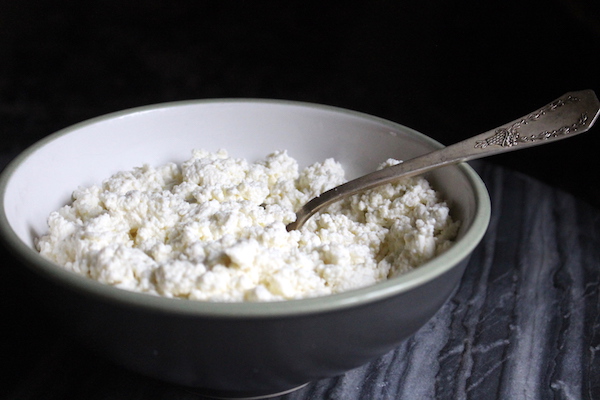
The term “Farmer’s Cheese” is derived from its traditional method of production. This type of cheese was historically made on farms with leftover milk after the cream had been skimmed off for butter. This process allowed farmers to utilize all parts of their milk supply, reducing waste and creating a nutritious food product.
The simplicity of the cheese-making process also contributed to its name. Farmer’s Cheese requires only a few basic ingredients — typically just milk, a starter culture, and an acid like vinegar or lemon juice. The process does not require special equipment or aging time, making it accessible for farmers to produce.
Additionally, the name reflects the variations of this cheese across different regions. In Eastern Europe, for instance, it’s known as twaróg, tvorog, or syr. Despite these regional names, the common link is that these are all simple cheeses traditionally made on farms, hence the generic term “Farmer’s Cheese.”
Is Farmer’s Cheese The Same As Mozzarella?
Farmer’s Cheese and Mozzarella are not the same. They differ significantly in terms of their production process, texture, and flavor.
| Aspect | Farmer’s Cheese | Mozzarella |
|---|---|---|
| Origin | Traditionally made on farms with leftover milk | Originates from Italy, specifically the Campania region |
| Production Process | Made by adding a starter culture and an acid (like vinegar or lemon juice) to milk. Curds are cut, drained, and then pressed | Made using a technique called pasta filata or stretched-curd, which involves kneading the curd and pulling it into a stretchy consistency before it’s shaped into balls |
| Texture | Soft, crumbly texture | Semi-soft, elastic texture |
| Flavor | Mild and subtly tangy flavor | Delicate, milky flavor |
| Use in Cooking | Versatile; works well in both sweet and savory dishes, absorbs and enhances flavors of other ingredients | Often used in Italian cuisine, famous for its use in pizza and Caprese salad due to its meltability and mild flavor |
| Pairings | Pairs well with fresh fruits, honey, jams, or robust wines | Pairs well with tomatoes, basil, olive oil, and also complements a variety of wines and fruits |
Production Process:
Farmer’s Cheese is traditionally made from leftover milk on farms. It’s a simple cheese that requires only milk, a starter culture, and an acid like vinegar or lemon juice. The curds are cut, drained, and then pressed, resulting in a firmer, drier texture. On the other hand, Mozzarella is traditionally made using a technique called pasta filata or stretched curd. This involves kneading the curd and pulling it into a stretchy consistency before it’s shaped into balls, which gives Mozzarella its signature elasticity.
Texture:
Farmer’s Cheese has a soft, crumbly texture, while Mozzarella is known for its semi-soft, elastic texture. The consistency of Farmer’s Cheese usually falls somewhere between a fresh Mozzarella and a soft cheddar.
Flavor:
Farmer’s Cheese has a mild and subtly tangy flavor, while Mozzarella is characterized by its delicate, milky flavor.
>> Click here to read our in-depth guide on Mozzarella
While both cheeses can be used in a variety of dishes, they each bring unique characteristics to the table in terms of flavor and texture.
What is Farmer’s Cheese Used For?
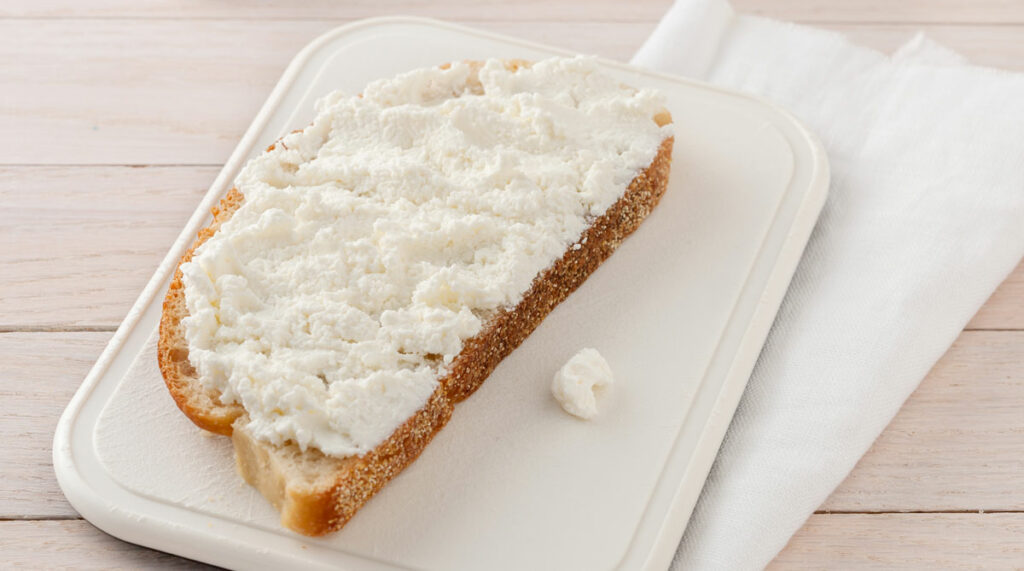
- Baking: Thanks to its soft, crumbly texture and mild flavor, Farmer’s Cheese is an excellent ingredient for baking. It’s often used in cheesecakes, pastries, muffins, and bread.
- Cooking: It can be used in dishes like lasagna, stuffed shells, or pierogi as a substitute for ricotta or cottage cheese. It can also be melted onto pizzas or flatbreads.
- Spreads: Farmer’s Cheese can be mixed with herbs and spices to make a flavorful spread for crackers, bagels, or bread.
- Salads: Crumbled Farmer’s Cheese adds a tangy, creamy element to salads.
- Desserts: Mixed with sugar, vanilla, and other flavors, it can be used as a filling for crepes or blintzes.
- Snacks: Farmer’s Cheese can simply be enjoyed on its own or with fruit and honey as a snack.
Because of its mild flavor, Farmer’s Cheese is great at absorbing and enhancing the flavors of the ingredients it’s paired with, making it a versatile addition to many recipes.
Top 10 Farmer’s Cheese Substitutes
| Substitute | Characteristics | Best Used In |
|---|---|---|
| Ricotta | A soft Italian cheese with a similar texture and mild flavor | Baked goods, pasta dishes, desserts |
| Cottage Cheese | Slightly more liquid, but similar in taste. It has small curds and a creamy texture | Salads, spreads, baked goods |
| Cream Cheese | Creamier and richer, but still offers a mild flavor | Spreads, baking, dips |
| Queso Fresco | A Mexican cheese that is mild and crumbly like Farmer’s Cheese | Tacos, salads, as a garnish |
| Feta | Saltier and tangier, but similar crumbly texture | Salads, Mediterranean dishes |
| Mascarpone | An Italian cheese that is creamier and sweeter | Desserts, spreads |
| Neufchâtel | Similar to cream cheese but lower in fat | Spreads, dips, baking |
| Paneer | An Indian cheese that doesn’t melt, similar in texture | Indian dishes, grilled |
| Quark | A German cheese that is creamy and tangy | Baking, spreads, dips |
| Goat Cheese | Tangier and creamier, but a good substitute in terms of texture | Salads, spreads, baking |
Where to Buy Farmer’s Cheese?
- Whole Foods Market
- Amazon
- Grandpa’s Cheesebarn
- Brennan’s Market
- Renard’s Cheese
- Russian Food USA
- Lifeway Kefir
- The Old Sautee Store
- Kroger
What Pairs Well With Farmer’s Cheese?
Food that goes well with Farmer’s Cheese:
| Category | Foods |
|---|---|
| Breads | Bagels, multigrain bread, sourdough bread, pita bread, tortillas |
| Fruits | Apples, pears, grapes, strawberries, figs |
| Vegetables | Tomatoes, cucumbers, bell peppers, spinach, olives |
| Meats | Ham, turkey, chicken, bacon, smoked salmon |
| Condiments and Spices | Honey, jam, pesto, garlic, oregano, thyme |
| Grains and Pasta | Quinoa, couscous, pasta, oats |
| Nuts and Seeds | Almonds, walnuts, chia seeds, pumpkin seeds, flax seeds |
| Desserts | Chocolate, cookies, fruit tarts, cheesecake |
Also read: What Fruit Goes on a Charcuterie Board?
Beverage that goes well with Farmer’s Cheese:
| Category | Beverages |
|---|---|
| Wines | Chardonnay, Sauvignon Blanc, Pinot Grigio, Riesling |
| Beers | Pilsners, Wheat Beers, Light Lagers |
| Non-Alcoholic | Apple Cider, Grape Juice, Herbal Teas (like chamomile or mint) |
| Spirits | Vodka, Gin, White Rum |
| Coffees & Teas | Cappuccino, Earl Grey Tea, Green Tea |
Also read: Best Wine and Cheese Pairings: The Ultimate Guide
How to Make Farmer’s Cheese: A Recipe
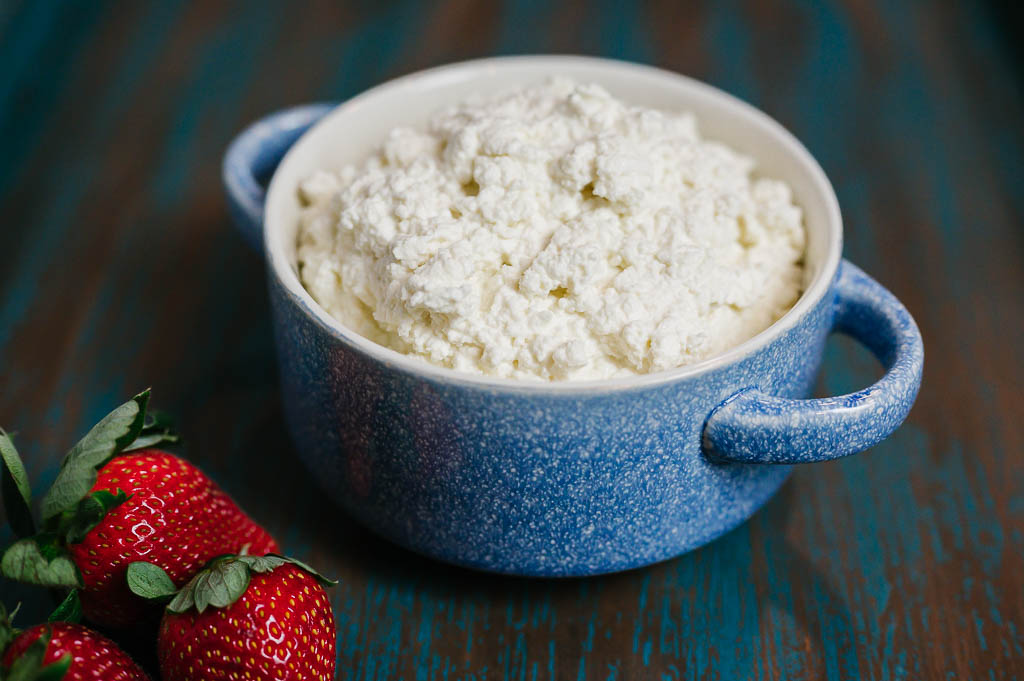
Farmer’s Cheese is a basic, un-aged cheese with a soft and crumbly texture and a subtly tangy flavor.
It’s an excellent way to introduce yourself to the world of cheese-making as it requires only a few ingredients and doesn’t need special equipment or aging time.
Ingredients
- 1 gallon of whole milk (not ultra-pasteurized)
- 1/4 cup of white vinegar or lemon juice
- 1-2 teaspoons of salt
Instructions
- Heat the Milk: Pour the milk into a large, heavy-bottomed pot. Slowly heat it over medium heat until it reaches a temperature of about 185°F. This should take around 15-20 minutes. Make sure to stir the milk occasionally to prevent it from scorching at the bottom of the pot.
- Add the Acid: Remove the pot from the heat and stir in the vinegar or lemon juice. The milk should start to curdle immediately.
- Let it Sit: Cover the pot and let it sit undisturbed at room temperature for 1-2 hours. During this time, the acid will continue to work on the milk, and solid curds will form.
- Drain the Curds: Line a colander with a clean kitchen towel or cheesecloth and set it over a large bowl or sink. Pour the curds and whey into the colander. The whey will drain off, leaving you with the curds.
- Press the Cheese: Gather the corners of the cloth and twist them together to press out as much of the remaining whey as possible. You can also place a weight on top of the cheese to help press out the liquid. Let it drain for about 1 hour.
- Season the Cheese: Unwrap the cheese and transfer it to a bowl. Stir in the salt and adjust to taste. At this point, your Farmer’s Cheese is ready! It can be used immediately or refrigerated. If you’re not using it right away, cover it and store it in the refrigerator. It will keep for up to 1 week.
Enjoying Your Farmer’s Cheese
Farmer’s Cheese is incredibly versatile. Enjoy it spread on fresh bread with a drizzle of honey for a simple snack. Or use it in baking — it works wonderfully in cheesecakes or other desserts. For a savory option, try using it in place of ricotta in lasagna or stuffed shells.
Further Recipes
Once you’ve mastered making Farmer’s Cheese, you can experiment with adding herbs, spices, or even fruits to create your own flavored cheeses. You could also try using your homemade Farmer’s Cheese in recipes that call for other soft cheeses, like in salads, dips, or as a topping for pizzas and flatbreads. Enjoy the process and the delicious results of your homemade cheese-making!
The History and Origin of Farmer’s Cheese: A Journey Through Time
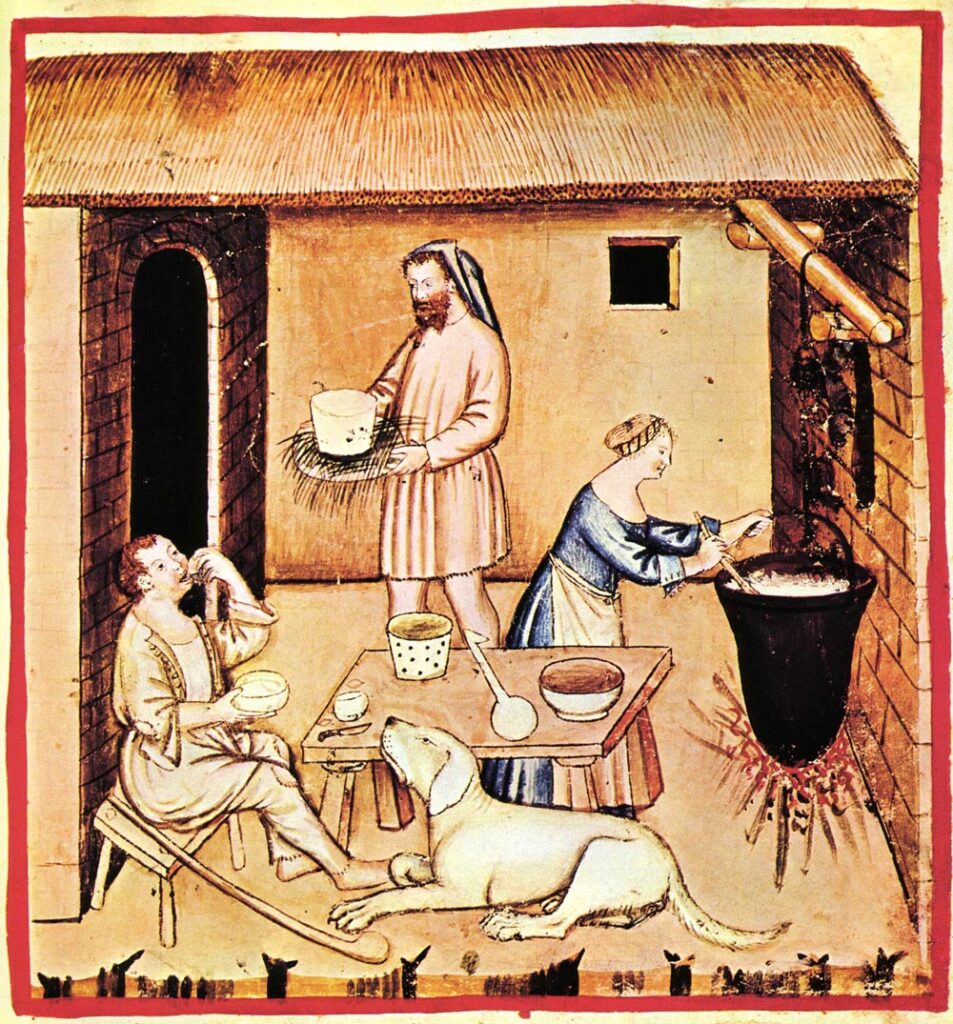
Farmer’s cheese, known for its humble origin and unique versatility, has been a staple in many cultures around the globe for centuries. It is an unripened cheese typically made from cow, goat, or sheep milk and reflects the resourcefulness of our ancestors.
Origins and Evolution
The earliest record of Farmer’s Cheese dates back to the 1300s in German documents, where it was referred to as “quark”. The name ‘Farmer’s Cheese’ itself originated from the tradition of farmers creating it as a way to utilize leftover milk after skimming the cream for butter.
In the United States, farmer cheese is pressed curds, an unripened cheese made by adding rennet and bacterial starter to coagulate and acidify milk. This practice was brought over by English Puritan dairy farmers in the 17th century who had a vast knowledge of dairy farming and cheesemaking.
Interestingly, cheese-making probably originated soon after humans first took milk from wild or domesticated animals. There are even Biblical references to “cheese of the herd”, showing how ancient this delicacy truly is.
Cultural Significance and Regional Varieties
Farmer’s Cheese holds a significant place in various cultures due to its simplicity and adaptability. In Eastern Europe, it is known as twaróg, tvorog, or syr, and is found in almost every Slavic, Baltic, and Germanic household.
In Ghana, a unique version of farmer’s cheese called wagashi or waagashi is made by Fulani women using grass-fed cow milk and Xylopia aethipica leaves as the curdling agent. This shows how different regions adapt the basic recipe to incorporate local ingredients and tastes.
Unique Characteristics and Production
What makes Farmer’s Cheese special is its simple production process which has remained true to its roots over time. The process involves curdling milk, separating the curds from the whey, and pressing the curds into a solid form.
Despite the advancements in technology, many farmers still choose traditional methods to produce this cheese, preserving its unique characteristics – a mild, creamy flavor, and a soft, crumbly texture.
Conclusion
Farmer’s Cheese stands as a testament to the ingenuity of our ancestors and their ability to create a lasting food source from simple ingredients. It is a reminder of our agricultural past and continues to be enjoyed in various forms around the world today. Whether it’s in a sweet dessert or a savory dish, Farmer’s Cheese has secured its place in global gastronomy due to its humble origins, versatility, and delightful taste.
Frequently Asked Questions
1. What is another name for Farmer’s Cheese?
Farmer’s Cheese is known by different names in various cultures. Some of these include:
- Twaróg in Poland
- Tvorog in Russia
- Quark in Germany
- Biezpiens in Latvia
- Queso Blanco in Spanish-speaking countries
- Sirene in Bulgaria
Note: These names might refer to slightly different variations of the cheese, but they are all similar to Farmer’s Cheese in their basic composition and preparation methods.
2. What kind of milk is Farmer’s Cheese made from?
Farmer’s Cheese can be made from a variety of milks. Traditionally, it is made from cow’s milk. However, it can also be made from goat’s milk or sheep’s milk depending on the region and specific recipe. The type of milk used can influence the final flavor and texture of the cheese.
Also read:
- Queso Fresco: A Delightful Journey through its Complex Flavors
- All About Roquefort: An Insider’s Guide to the King of Blue Cheese
- Asiago Cheese: An In-depth Exploration of Nutrition and Taste
- Queso de Bola: The Classic Cheese of Celebrations
- What is American Cheese? The Controversial Delight of the Dairy World
- Emmental: A Comprehensive Guide to Switzerland’s Cheese Haven
- The Ultimate Guide to Kasseri: A Taste of Tradition





